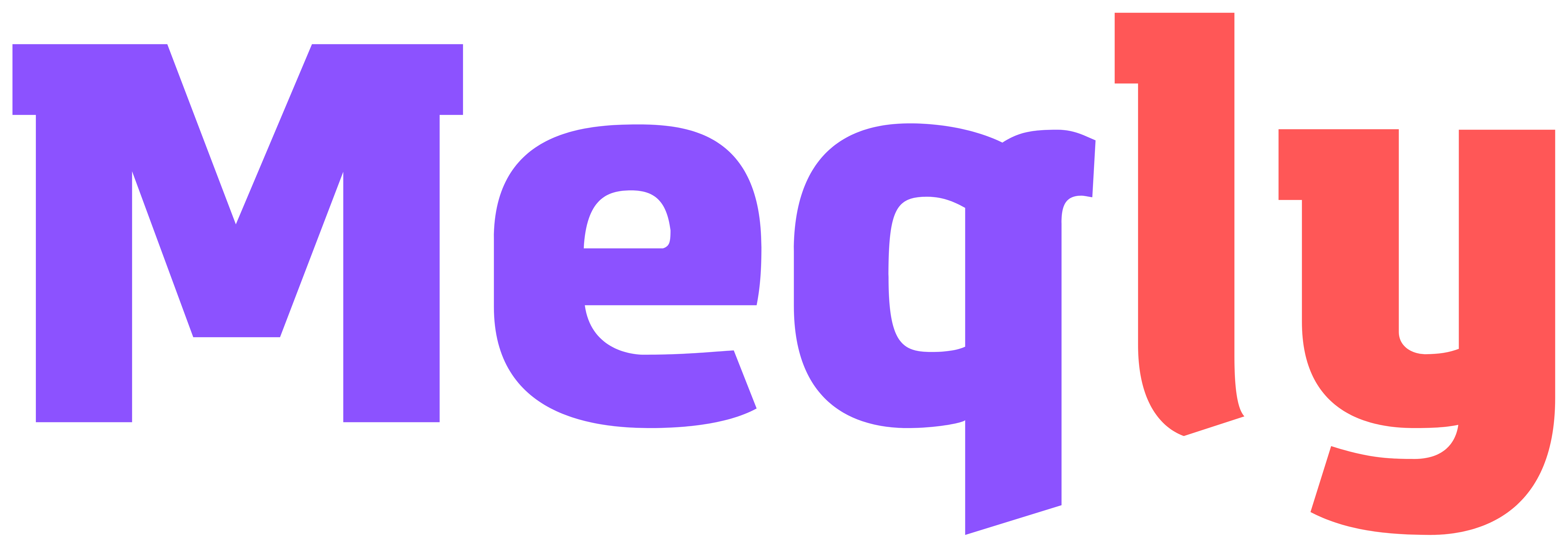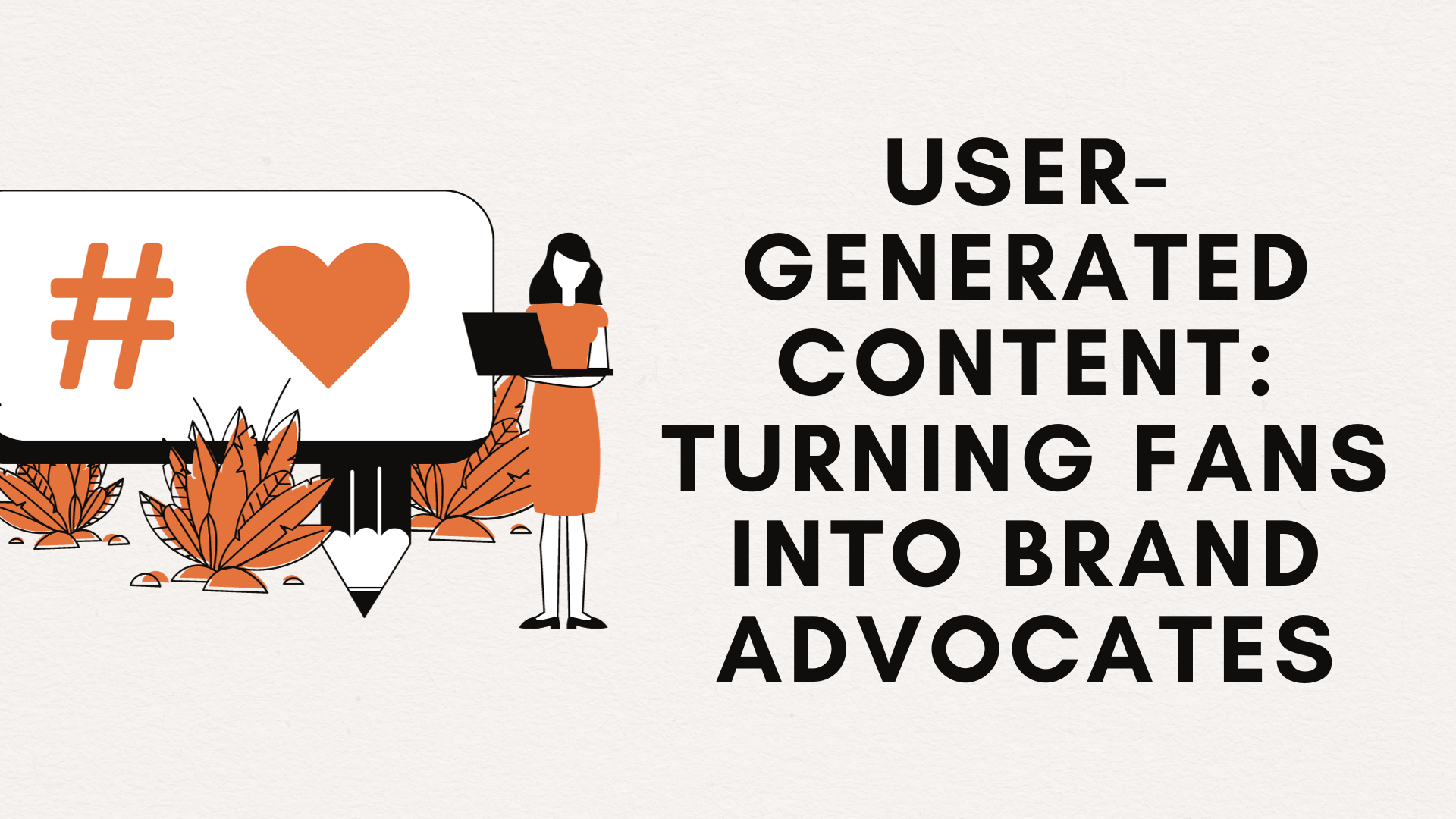The Power of User-Generated Content
Welcome to the world of User-Generated Content (UGC), where your fans become your brand advocates. UGC is a powerful force in the world of social media marketing. Your customers are not just passive consumers; they are active participants in shaping your brand’s story. User-generated content (UGC) is the secret sauce that turns casual fans into passionate brand advocates. In this guide, we’ll explore the dynamic world of UGC, understanding what it is, why it matters, and how you can harness it to turbocharge your brand’s presence in the online realm.
Let’s dive in and explore its significance.
Understanding User-Generated Content (UGC)
UGC refers to any content, such as text, images, videos, or reviews, created by your customers or fans, rather than your brand. It’s the authentic content that showcases their experiences with your products or services.
- Authenticity: UGC is genuine and trustworthy, as it comes directly from your audience.
- Credibility: People often trust UGC more than brand-generated content, as it’s unbiased.
- Engagement: UGC can boost engagement by creating a sense of community and participation.
Benefits of UGC for Brand Advocacy
UGC has a range of benefits, with one of the most significant being its role in turning your customers into enthusiastic brand advocates.
- Word-of-Mouth Marketing: UGC acts as word-of-mouth marketing, with your satisfied customers spreading the word about your brand.
- Increased Trust: Potential customers are more likely to trust recommendations from peers over traditional advertising.
- Cost-Effective: UGC can be a cost-effective way to generate content, as your audience is doing the heavy lifting.
Examples of Successful UGC Campaigns
Seeing real-world examples can help illustrate the power of UGC. Here are some notable UGC campaigns:
- GoPro’s Adventure Seekers: GoPro encouraged users to share their daring adventures using the camera, leading to a wealth of exciting UGC.
- Coca-Cola’s “Share a Coke”: Coca-Cola printed people’s names on their bottles, encouraging consumers to share their personalized Coke moments.
- Starbucks’ #RedCupContest: Starbucks ran an annual UGC contest where customers shared creative photos of their holiday coffee cups.
These campaigns demonstrate how UGC can boost brand visibility and engagement while creating a sense of community among customers.
Encouraging UGC from Your Audience
Now that you understand the significance of User-Generated Content (UGC), let’s explore strategies to actively encourage your audience to contribute their valuable content.
Strategies to Motivate User Contributions
Encouraging UGC requires a thoughtful approach to motivate your audience to participate willingly. Here are some effective strategies:
- Highlight User Success Stories: Showcase the success stories of customers who have benefited from your products or services, inspiring others to share their experiences.
- Offer Incentives: Provide incentives such as discounts, giveaways, or exclusive access to incentivize your audience to create UGC.
- Create a Branded Hashtag: Develop a unique and memorable hashtag related to your brand or campaign to make it easy for users to tag their content.
- Engage and Respond: Actively engage with users who contribute UGC by liking, commenting, and sharing their posts to acknowledge their efforts.
Implementing these strategies can ignite enthusiasm among your audience to actively participate and contribute UGC.
Creating UGC-Friendly Contests and Challenges
Contests and challenges are powerful tools to stimulate UGC creation. Here’s how to create UGC-friendly contests and challenges:
- Set Clear Rules and Goals: Clearly outline the rules, goals, and prizes of your contest to ensure participants understand what’s required.
- Align with Your Brand: Design contests that align with your brand’s values and mission, encouraging UGC that resonates with your audience.
- Share User-Generated Content: Highlight UGC entries on your social media platforms to motivate more users to participate.
Well-designed contests and challenges can drive significant UGC and engagement while fostering a sense of community.
Leveraging Hashtags and Social Media Engagement
Hashtags are a fundamental tool for UGC campaigns. Here’s how to leverage them effectively:
- Create a Unique Branded Hashtag: Develop a hashtag specific to your campaign or brand, making it easy for users to identify and join in.
- Promote the Hashtag: Promote your branded hashtag across your social media channels, marketing materials, and even in your physical locations if applicable.
- Encourage Creative Use: Encourage users to get creative with the hashtag by sharing unique content or stories related to your brand.
Leveraging hashtags and actively engaging with users who use them can significantly amplify the reach and impact of your UGC efforts.
Managing and Showcasing UGC Effectively
Once you’ve successfully encouraged User-Generated Content (UGC) from your audience, it’s vital to manage and showcase it effectively to maximize its impact. Let’s explore how to do just that.
Legal and Ethical Considerations for UGC
Before you start using UGC in your marketing efforts, it’s crucial to address legal and ethical considerations:
- Obtain Permissions: Ensure you have explicit permission from content creators to use their UGC for promotional purposes.
- Respect Privacy: Be mindful of user privacy rights and avoid sharing personal information without consent.
- Give Proper Attribution: Always credit content creators when using their UGC, acknowledging their contribution.
Adhering to legal and ethical standards not only protects your brand but also builds trust with your audience.
Moderation and Quality Control
Moderation is essential to maintain the quality and relevance of UGC shared by your audience. Here’s how to handle it:
- Set Clear Guidelines: Establish clear guidelines for what type of UGC is acceptable and ensure users are aware of them.
- Implement Moderation Tools: Use moderation tools and filters to automatically screen content for inappropriate or off-brand material.
- Human Review: Consider having a human moderator review UGC to ensure it aligns with your guidelines and standards.
Effective moderation helps maintain a positive image for your brand and prevents the sharing of undesirable content.
Incorporating UGC into Your Content Strategy
To harness the full potential of UGC, integrate it into your broader content strategy:
- Feature UGC on Your Website: Showcase UGC on your website to increase its visibility and provide social proof to website visitors.
- Create UGC-Driven Campaigns: Develop marketing campaigns centered around UGC to engage your audience and encourage further contributions.
- Share UGC Across Platforms: Distribute UGC on various social media platforms to reach a wider audience and enhance brand authenticity.
Incorporating UGC into your content strategy not only enriches your content but also strengthens your brand’s connection with your audience.
Building a Community of Brand Advocates
Building a community of brand advocates through User-Generated Content (UGC) is a powerful way to strengthen your brand’s presence and customer loyalty. Let’s explore how to foster this sense of advocacy.
Recognizing and Rewarding UGC Contributors
Showcasing appreciation for those who contribute UGC is essential to encourage continued engagement. Here’s how to recognize and reward UGC contributors:
- Feature UGC Creators: Highlight UGC contributors on your social media platforms, website, or newsletters to celebrate their contributions.
- Provide Exclusive Perks: Offer exclusive discounts, access to events, or other perks to UGC creators as a token of gratitude.
- Run UGC Contests: Organize contests where contributors have a chance to win prizes and gain recognition.
Recognizing and rewarding UGC contributors not only acknowledges their efforts but also motivates others to participate.
Fostering Brand Loyalty through UGC
UGC can be a powerful tool for fostering brand loyalty among your customers. Here’s how to do it:
- Create a Sense of Belonging: Make your customers feel like part of a community by acknowledging their UGC and making them feel valued.
- Share Authentic Stories: Use UGC to share authentic stories and experiences of your customers, reinforcing the emotional connection they have with your brand.
- Encourage Reviews and Testimonials: Prompt satisfied customers to leave reviews and testimonials as a form of UGC that can boost brand trust.
Fostering brand loyalty through UGC helps in building long-lasting relationships with your customers.
Transforming Fans into Active Advocates
The ultimate goal of UGC is to turn your fans into active brand advocates who enthusiastically promote your brand. Here’s how to make that transformation:
- Engage with Advocates: Continuously engage with your brand advocates, responding to their UGC and involving them in brand-related discussions.
- Provide Advocacy Tools: Offer resources or materials that advocates can use to promote your brand, such as branded content or templates.
- Encourage Advocacy Actions: Prompt advocates to share UGC, write reviews, or refer friends and family to your brand.
Transforming fans into active advocates extends the reach of your brand through authentic recommendations and endorsements.
Measuring the Impact of UGC Campaigns
Understanding the impact of your User-Generated Content (UGC) campaigns is essential for optimizing your strategy and achieving your marketing goals. Let’s explore how to measure this impact effectively.
Defining Key Metrics and KPIs
Measuring UGC success starts with defining key metrics and Key Performance Indicators (KPIs) specific to your campaign objectives. Here’s how to go about it:
- Identify Your Goals: Determine the primary goals of your UGC campaign, whether it’s increasing brand awareness, boosting engagement, or driving sales.
- Select Relevant Metrics: Choose metrics that align with your goals, such as engagement rate, reach, conversion rate, or customer retention.
- Set Clear KPIs: Establish Key Performance Indicators (KPIs) with specific targets to measure the success of your UGC campaign.
Defining key metrics and KPIs provides a clear roadmap for evaluating UGC campaign performance.
Analyzing UGC Performance Data
Once your UGC campaign is live, it’s time to collect and analyze performance data to assess its impact. Here’s how to analyze UGC performance effectively:
- Monitor in Real-Time: Continuously monitor UGC performance throughout the campaign to identify trends and opportunities for improvement.
- Review User Engagement: Analyze engagement metrics, such as likes, comments, shares, and click-through rates, to gauge audience interaction.
- Assess Conversion Rates: Measure how UGC contributes to conversions, whether it’s driving sales, sign-ups, or other desired actions.
Analyzing UGC performance data helps you understand what’s working and where adjustments may be needed.
Iterating and Improving Your UGC Strategy
Once you’ve collected and analyzed UGC performance data, it’s time to iterate and improve your UGC strategy. Here’s how to do it:
- Identify Success Patterns: Determine which aspects of your UGC campaign are driving the most positive results and consider replicating them in future campaigns.
- Address Weaknesses: Identify areas where your UGC campaign may have fallen short and develop strategies to address those weaknesses.
- Experiment and Innovate: Be open to trying new approaches and creative ideas based on what you’ve learned from previous campaigns.
Iterating and improving your UGC strategy ensures that each campaign becomes more effective than the last, ultimately helping you achieve your marketing objectives.
UGC across Different Social Media Platforms
User-Generated Content (UGC) is a versatile tool that can be harnessed effectively across various social media platforms. Let’s explore how to leverage UGC on popular platforms like Instagram, Facebook, and Twitter.
UGC on Instagram: Tips and Best Practices
Instagram is a visual platform that thrives on authenticity and creativity. Here are some tips and best practices for utilizing UGC on Instagram:
- Encourage Visual Storytelling: Encourage users to share their stories through images and short videos that reflect their experiences with your brand.
- Create Branded Hashtags: Develop unique and catchy hashtags related to your brand or campaign, making it easy for users to tag their UGC.
- Feature UGC in Stories and Highlights: Showcase UGC in your Instagram Stories and Highlights to keep it visible to your audience.
Instagram is all about visuals, so make sure to embrace the platform’s aesthetics and engage your audience through captivating UGC.
Leveraging UGC on Facebook
Facebook is a versatile platform that allows for various content formats. Here’s how to leverage UGC effectively on Facebook:
- Create UGC-Focused Posts: Craft posts that encourage users to share their stories, photos, or reviews related to your brand or products.
- Engage with UGC: Respond to user-generated content by commenting, liking, and sharing to foster a sense of community.
- Utilize Facebook Groups: Consider creating or participating in Facebook Groups where customers can share their experiences and UGC.
Facebook’s wide-reaching audience makes it an ideal platform for harnessing UGC to build brand engagement.
Utilizing UGC Opportunities on Twitter
Twitter is known for its fast-paced conversations and real-time updates. Here’s how to make the most of UGC opportunities on Twitter:
- Promote UGC with Hashtags: Use relevant hashtags to encourage users to share their content related to your brand or campaigns.
- Retweet and Quote UGC: Retweet or quote user-generated content to amplify its reach and show appreciation for your audience.
- Host Twitter Chats: Organize Twitter chats or Q&A sessions where users can share their thoughts and questions.
Twitter’s real-time nature allows for quick and engaging interactions with your audience through UGC.
Handling Challenges and Risks with UGC
While User-Generated Content (UGC) can be a powerful asset, it’s essential to be prepared to address challenges and mitigate potential risks. Let’s explore strategies for handling these challenges.
Dealing with Negative or Inappropriate UGC
Negative or inappropriate UGC can pose a challenge to your brand’s reputation. Here’s how to address such content effectively:
- Have a Clear Moderation Policy: Establish a moderation policy that outlines what is considered inappropriate or offensive content, and how it will be handled.
- Respond Diplomatically: If you encounter negative UGC, respond professionally and seek to resolve the issue privately, demonstrating your commitment to customer satisfaction.
- Use Filters and Moderation Tools: Implement automated filters and moderation tools to detect and remove inappropriate UGC promptly.
Dealing with negative UGC proactively can help protect your brand’s reputation and maintain a positive online environment.
Managing Intellectual Property Rights
When using UGC, it’s essential to respect intellectual property rights. Here’s how to manage this aspect effectively:
- Obtain Clear Permissions: Ensure you have explicit permission from content creators to use their UGC for marketing or promotional purposes.
- Give Proper Attribution: Always credit content creators when using their UGC, acknowledging their contribution.
- Stay Informed About Copyright: Educate your team about copyright laws and stay updated on any changes to avoid legal issues.
Respecting intellectual property rights demonstrates your commitment to ethical and legal UGC practices.
Staying Compliant with Data Privacy Regulations
Data privacy regulations are crucial considerations when using UGC, especially when it involves personal information. Here’s how to stay compliant:
- Understand Data Privacy Laws: Familiarize yourself with data privacy regulations relevant to your region, such as GDPR or CCPA.
- Request Consent: When collecting personal information through UGC, request explicit consent from users and clearly explain how their data will be used.
- Secure Data Handling: Implement secure data handling practices and ensure that any third-party tools or platforms you use are also compliant.
Staying compliant with data privacy regulations is not only a legal requirement but also a trust-building factor for your audience.
As we wrap up our exploration of user-generated content, it’s essential to remember that at the heart of this strategy is a deep respect for your community and an acknowledgment of their value. UGC is not just about content; it’s about building trust, fostering engagement, and transforming customers into loyal brand advocates. By embracing UGC, you’re not just telling your brand’s story; you’re inviting your audience to become part of it. So, go ahead, encourage creativity, nurture your community, and watch your brand’s influence soar in the vast landscape of the digital world.



